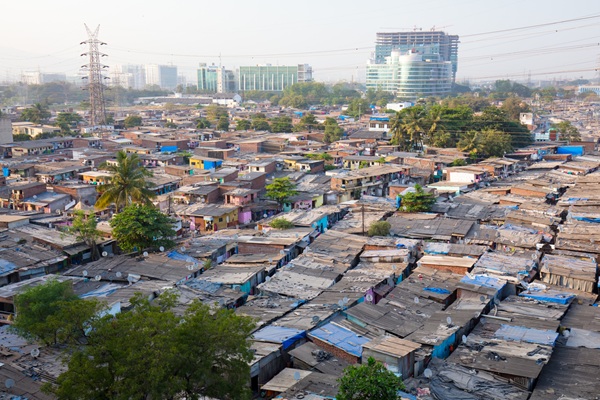.png)
Nobel Prize Lessons India can’t Ignore: Gender, Institutions, Innovation
The last three Economics Nobel Prizes offer India a blueprint for growth rooted in gender inclusion, strong institution, and a fearless embrace of innovation.


Dr Hemachandra Padhan is an Assistant Professor, General Management and Economics, IIM Sambalpur.*
November 7, 2025 at 6:54 AM IST
When the world’s top economists are honoured with a Nobel, they don’t just celebrate theory, but signal a shift in how we understand prosperity. Over the past three years, the Nobel Prizes in Economic Sciences mapped lessons for every nation seeking durable growth.
From Claudia Goldin’s revelations on gender and labour markets (2023), to Daron Acemoglu, Simon Johnson, and James Robinson’s insights on institutions (2024), to Joel Mokyr, Philippe Aghion, and Peter Howitt’s work on innovation and creative destruction (2025), these laureates together outline a powerful template for India.
An India that wants to grow into a $7 trillion economy cannot rely on capital or consumption alone. It must rethink how people participate, how institutions function, and how ideas evolve.
Gender Inclusion
When Harvard economist Claudia Goldin won the Nobel in 2023, she didn’t just add another chapter to economic history; she reframed it. Her research traced women’s participation in the workforce over centuries and revealed a hard truth: educational, while vital, is not enough to achieve equality.
Goldin found that persistent gender gaps stem from job structures that penalise career interruptions, undervalue flexibility, and reward long, continuous working hours—conditions often incompatible with caregiving roles.
For India, Goldin’s findings strike at the heart of an enduring paradox: despite major gains in girls’ education, female labour-force participation remains below 30%, among the lowest globally. India’s growth potential is constrained not by lack of talent but by labour-market design. Informal employment, rigid work hours, inadequate maternity and childcare support, and deep-rooted social expectations push millions of educated women out of the workforce.
India must shift focus from education alone to career continuity and flexibility. The government’s push for formalisation, digital work platforms, and skilling can integrate women better if accompanied by measures such as:
[1] Re-entry programmes for women returning from career breaks.
[2] Tax incentives for companies offering flexible or remote work options.
[3] Affordable childcare infrastructure and gender-neutral parental leave policies.
A one-percentage-point rise in female labour participation could add billions to India’s GDP. Goldin’s work reframes gender equality as an economic growth strategy, not merely a social goal.
Institutional Strength
The 2024 Nobel laureates—Acemoglu, Johnson, and Robinson—reminded the world that prosperity is political before it is economic. Their influential work, Why Nations Fail, shows that inclusive institutions—those ensuring rule of law, property rights, and opportunities—foster innovation and investment. Extractive institutions, which concentrate power and wealth, stifle it.
India’s democratic structure and digital governance achievements reflect inclusive intent, yet institutional weaknesses remain. Slow contract enforcement, erratic regulation, and bureaucratic inertia continue to sap productivity and investor confidence. The message is clear: growth is institutional, not accidental.
For India to move from emerging to advanced-economy status, strengthening institutions must be central to its reform agenda. Key areas include:
[1] Judicial and regulatory efficiency: faster dispute resolution, predictable taxation, and stable policies to attract long-term investment.
[2] State-level governance: competitive federalism must include measurable institutional quality benchmarks—transparency, ease of doing business, and accountability.
[3] Inclusive economic participation: institutions must empower citizens rather than exclude them.
India’s digital transformation—through Aadhaar, UPI, and digital governance—demonstrates institutional innovation at scale. But sustaining this momentum will require constant adaptation to new technologies, decentralisation of power, and institutional checks that balance efficiency with equity. India’s next policy frontier lies in institutional deepening—creating systems that are transparent, credible, and adaptive.
Creative Destruction
The 2025 Nobel Prize brought the spotlight back to innovation. Mokyr, Aghion, and Howitt explored how economies sustain growth through creative destruction—the constant churn of new technologies replacing old ones. Innovation, they argue, is the engine that transforms productivity and living standards—but it thrives only under conditions that reward risk-taking, competition, and adaptation.
For India, this insight could not be timelier. As the world’s fastest-growing major economy, India’s next leap depends on whether it can shift from factor-driven (labour and capital) to innovation-driven growth. The country’s start-up boom, expanding digital economy, and R&D initiatives like “Startup India” and “Atmanirbhar Bharat” mark a promising start. Yet, R&D investment remains below 1% of GDP, and collaboration between universities, industry, and the state is limited.
Therefore, the government should
[1] Encourage “creative destruction” through competition and openness—avoid overprotecting incumbents that block new entrants or technologies.
[2] Expand innovation ecosystems—increase R&D funding, foster collaboration between academia and industry, and incentivise patenting.
[3] Prioritise skills and adaptability—as automation and AI reshape jobs, India must invest in continuous skill development and lifelong learning systems.
[4] Enable technology diffusion beyond urban clusters—innovation must reach smaller towns and manufacturing hubs to lift productivity nationwide.
Mokyr’s historical perspective reminds policymakers that societies progress not only by inventing but by believing in the idea of progress. For India, nurturing such a culture—where science, enterprise, and curiosity are celebrated—is as important as fiscal or trade reforms.
Growth Blueprint
Viewed together, the last three Nobel Prizes form a coherent strategy: inclusive participation (2023), strong institutions (2024), and innovation (2025).
[1] Empower People: Unlock the economic potential of women and youth through flexible, formal, and well-paid employment.
[2]Reform Institutions: Modernise governance, judicial, and regulatory frameworks to enhance transparency and competitiveness. [3] Enable Innovation: Channel resources toward R&D, startups, and technology adoption while preparing workers for new forms of employment.
This alignment is not optional; it is essential. An economy cannot innovate effectively if half its population remains under-utilised or if institutions cannot guarantee stability and fairness. Nor can inclusivity or good governance alone deliver sustained prosperity without a dynamic culture of innovation.
India stands at a rare crossroads: poised to lead the global South and shape the next wave of growth. A holistic model of development where social inclusion, institutional integrity, and technological dynamism reinforce each other must come next.
Policymakers must see gender reform as growth reform, institutional reform as governance reform, and innovation policy as social policy. Together, they chart an economic philosophy tailor-made for India’s century—a model of growth that is inclusive, rules-based, and future-oriented.
If India can absorb these lessons, the question will no longer be if it can become a leading economy, but how soon.



